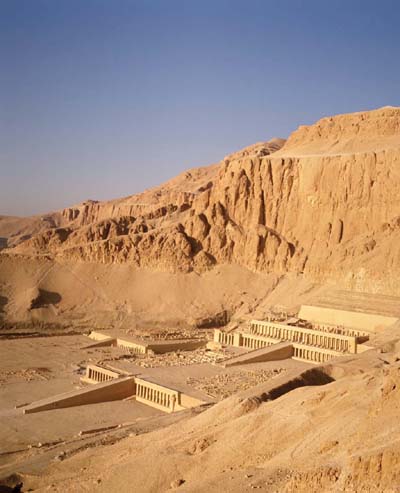Hatshepsut, << hat SHEHP soot >> (?-1458 B.C.?), was the fourth female pharaoh in Egyptian history. The daughter of King Thutmose I and his chief wife, Queen Ahmose, Hatshepsut married her half-brother, King Thutmose II. When Thutmose II died unexpectedly about 1479 B.C., Hatshepsut’s stepson, Thutmose III , inherited the throne. But because he was too young to rule, Hatshepsut served as regent (temporary ruler).

Within a few years, and with the support of the priests of the god Amun, Hatshepsut had herself crowned pharaoh alongside her stepson. Because Egyptians believed their kings were divine, she justified her new role by claiming to be the god Amun’s daughter. She also had herself represented as a man on monuments. See Amun .
As pharaoh, Hatshepsut encouraged trade and sent an expedition to the land of Punt, somewhere on the northeast coast of Africa. She also sponsored a vast building program at home. She added to the temple of Amun at Karnak and built for herself a great memorial temple, known today as Deir el-Bahri. These monuments, though badly damaged when Thutmose III attacked Hatshepsut’s memory after her death, have preserved her fame into the present day.
In 2007, Egyptian archaeologists announced they had identified Hatshepsut’s mummy. The mummy was discovered in 1903 in the Valley of the Kings, near Luxor, Egypt.
See also Megiddo, Battle of .
